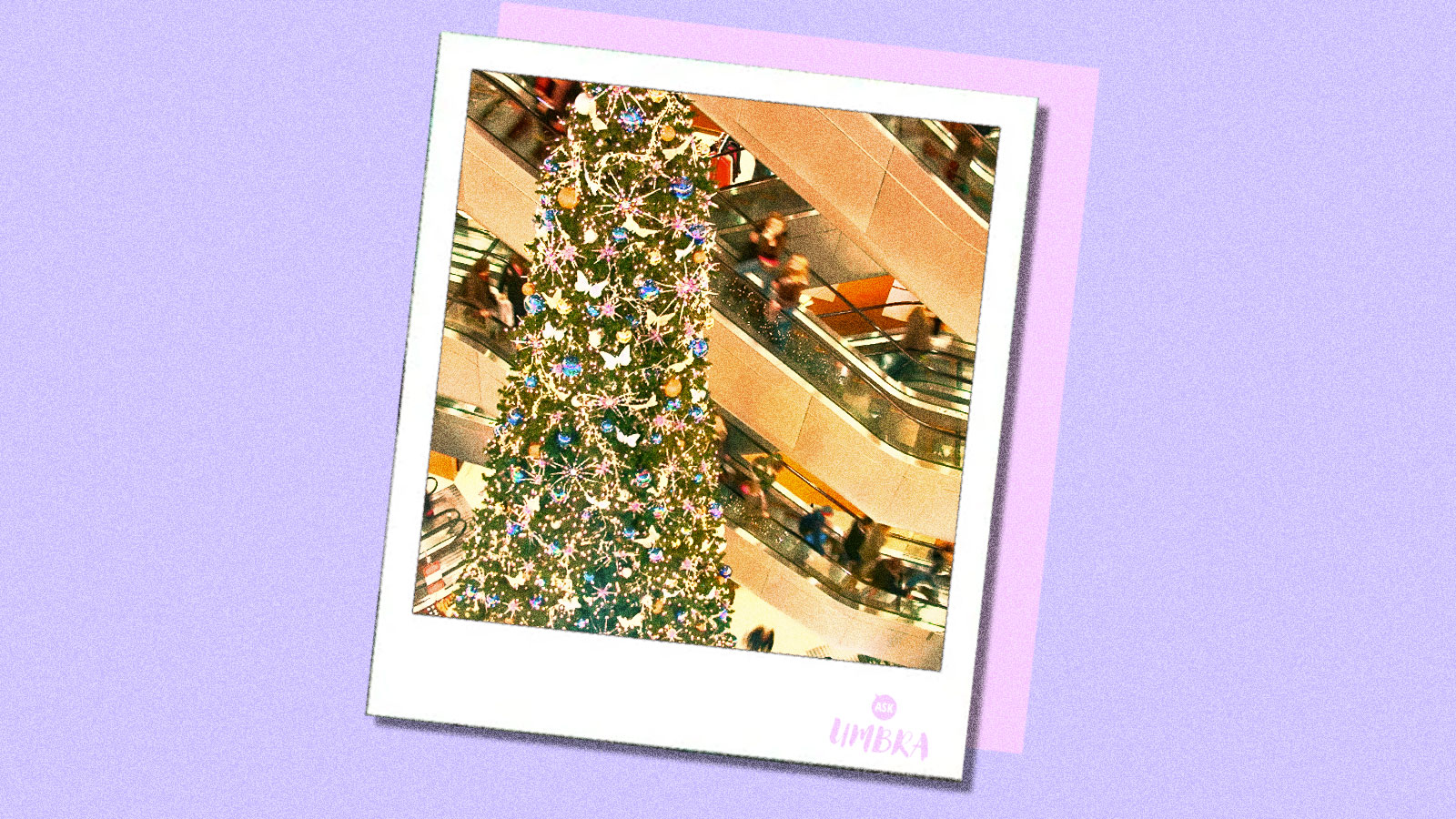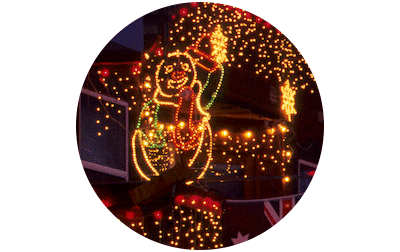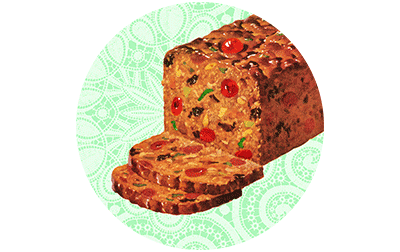 Q. Dear Umbra,
Q. Dear Umbra,
I always crave a visit to the mall around the holidays. Why do I find it so soothing? I consider myself an anti-consumerist!
— The Irresistible Naughtiness of Yuletide: Thrills In Malls
A. Dear TINY TIM,
It’s time for a little … SHOPPING HISTORY! While I am loath to consider my youth historical material, based on your question I suspect you and I are of a similar age. Especially for those of us who came of age in the pre-smartphone era, shopping centers were one of the few accessible, teen-oriented social spaces.
As a teenager, I spent so, so, so much of my free time at this vast outdoor mall in Pittsburgh called The Waterfront. I would meet one of my closest high school friends at the Popeye’s across from the Home Depot before heading to the AMC to catch the last screening of some Jude Law rom-com. I first laid eyes on the (truly awful) boy who would occupy all of my crush energy for the entirety of 10th grade at a birthday party at P.F. Chang’s. I consumed approximately a thousand Starbucks mochas and brick-like brownies.
But you can’t exactly separate mall culture from consumer culture. In between these landmark moments of adolescence, my friends and I spent endless hours in ambient shopping. We tried on super-low-rise jeans and pastel bikinis and midriff-baring T-shirts, imagining how this or that new addition to our “look” could reel in the attention of one idiot boy or the other, as if that would resolve any festering sense of inadequacy or sadness that we all suffered. Good old American materialism had successfully sold our short-circuiting baby brains on the idea that shopping equals happiness.
The sociological significance of malls and shopping centers to teen culture is well-trod territory, and you can find any number of 10,000-word academic papers explaining that teens need spaces to socialize, and there simply weren’t that many places for our teenage selves to hang out outside of our parents’ homes! And places you’re meant to shop in are certainly designed to be pleasant. An enormous amount of research has been poured into creating inviting commercial spaces that also put you in the mood to treat yourself to a little splurge.
While it used to be enough to marvel at the wares themselves, shopping has since become an experience, even a form of escape. There are hints of this even in Emile Zola’s 19th century novel The Ladies’ Paradise, which is about a relatively modest shopkeeper who develops a super-grand department store:
“A feeling of comfort penetrated [the shoppers], they seemed to be entering into spring after emerging from the winter of the street. Whilst the piercing wind, laden with rain and hail, was still blowing out of doors, the fine season was already budding forth in The Paradise galleries, with the light stuffs, soft flowery shades and rural gaiety of summer dresses and parasols.”
Prescient, Monsieur Zola. Lush department stores gave way to the malls we’re familiar with today — sprawling retail temples in which you could easily make a day of wandering. But as the popularity of online shopping grew over the 2000s, many malls began to fall into decline. Today, there are roughly 1,000 still in existence, but experts say about a quarter are expected to close in the next five years.
A McKinsey report from a few years back detailed how companies could cope with the impending demise of not just the mall, but the brick-and-mortar shop in general. Consumers want experiences with their things, they wrote; you need to give them a reason to want to cross your threshold that amounts to more than a merino wool sweater-cape at 30 percent off. “Mall operators,” they wrote, “must envision themselves no longer as real estate brokers, but instead as customer-facing providers of shoppable entertainment.”
To an environmental writer, there may be no more cringeworthy phrase than “shoppable entertainment,” because it transforms the act of buying things into an activity rather than a means to procuring needed items. Those associations make up kind of the foundation of the meaningless consumerism that drives unnecessary environmental degradation and carbon emissions! “We need to find happiness and community and value in activities other than shopping,” said the writer and activist Naomi Klein in a panel on climate-conscious design last year.
Yes, absolutely, say it a thousand more times. And yet, TINY TIM, I don’t think that means you need to perform some kind of Eternal Sunshine of the Spotless Mind brain-wipe of your fond retail-oriented memories. Intellectually, I take no pleasure in the fact that the backdrop to so many of my teenage memories were designed, at least in part, by the megacorporations behind brands like Hollister, PacSun, Abercrombie, and Gap. Atonement for my materialist 14-year-old sins is part of why I feel the need to expend tens of thousands of words beating the “don’t buy stuff you don’t need” drum over and over and over in this column.
But emotionally? Those stupid red Starbucks cups do spark warm memories of hours spent wandering from store to store picking out presents for friends. If I walk by an Abercrombie storefront to this day, the scent of the perfume that wafts copiously out of it still stirs up the very specific intimacy I had with my friend who used to work there. The solace of these chain stores themselves, the orderliness and warm lights and promise of some new little treat to help make up for the misery of December in Western Pennsylvania has not released its grip on the pleasure centers of my brain.
You don’t have to change what comforts you, but you can control how you react to it. Socialization and culture are very powerful forces, and your memories are indelibly formed by them. I truly find nothing wrong with the idea of wandering a Christmassy shopping district for the nostalgic ambiance alone, which is what it sounds like you enjoy the most. If shopping is supposed to be an experience, perhaps it doesn’t have to be tied to buying things. Someone worked really hard to set up those lights! Real human labor went into making and placing all those red and gold globes and evergreen sashes! It arguably needs your enjoyment to not go to waste!
If you’re still concerned that you won’t be able to resist the call to pull out your credit card, may I recommend meandering through those painstakingly decorated shopping districts after hours. I actually think it’s really lovely to walk through these areas at night during the holidays, when all the twinkle lights are still on and the dimly lit holiday decor feels genuinely peaceful. And it feels kind of illicit, which is the best possible callback to simpler teen times.
American culture is horrifically flawed, particularly with regard to its role in climate change, and it absolutely needs to shift. But I don’t believe that forgoing all your happy associations with materialism is a necessary precondition for becoming more climate-conscious. You just need to revisit how you seek out or recreate those associations now that you are a more aware grown-up.
Comfortingly,
Umbra








